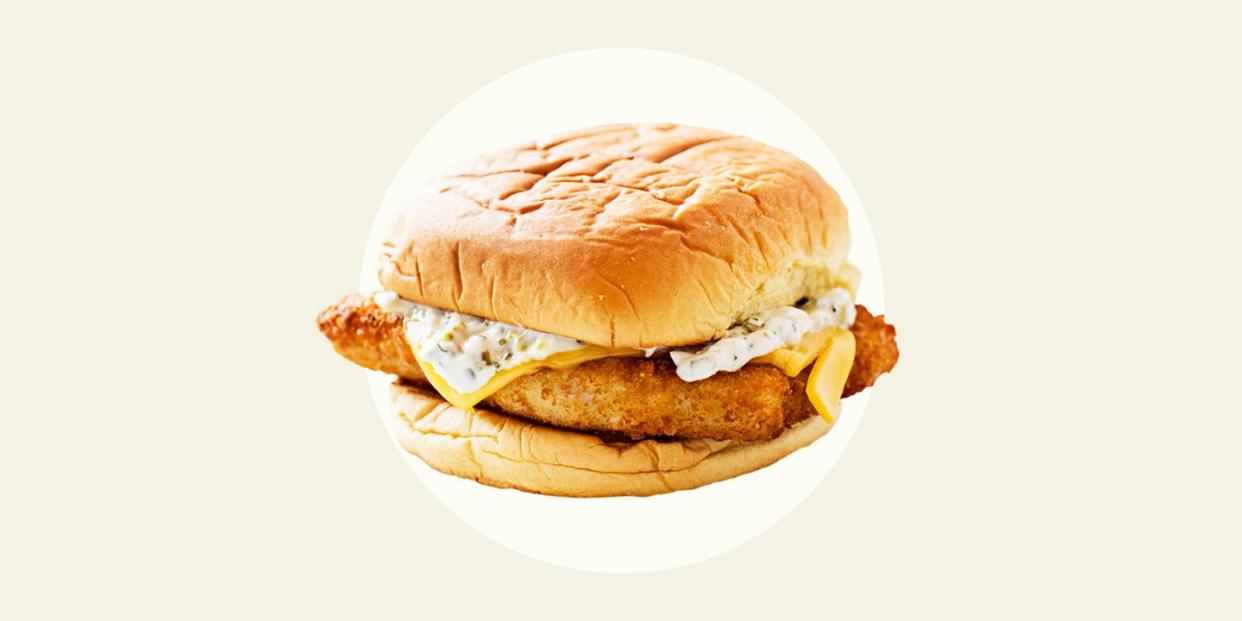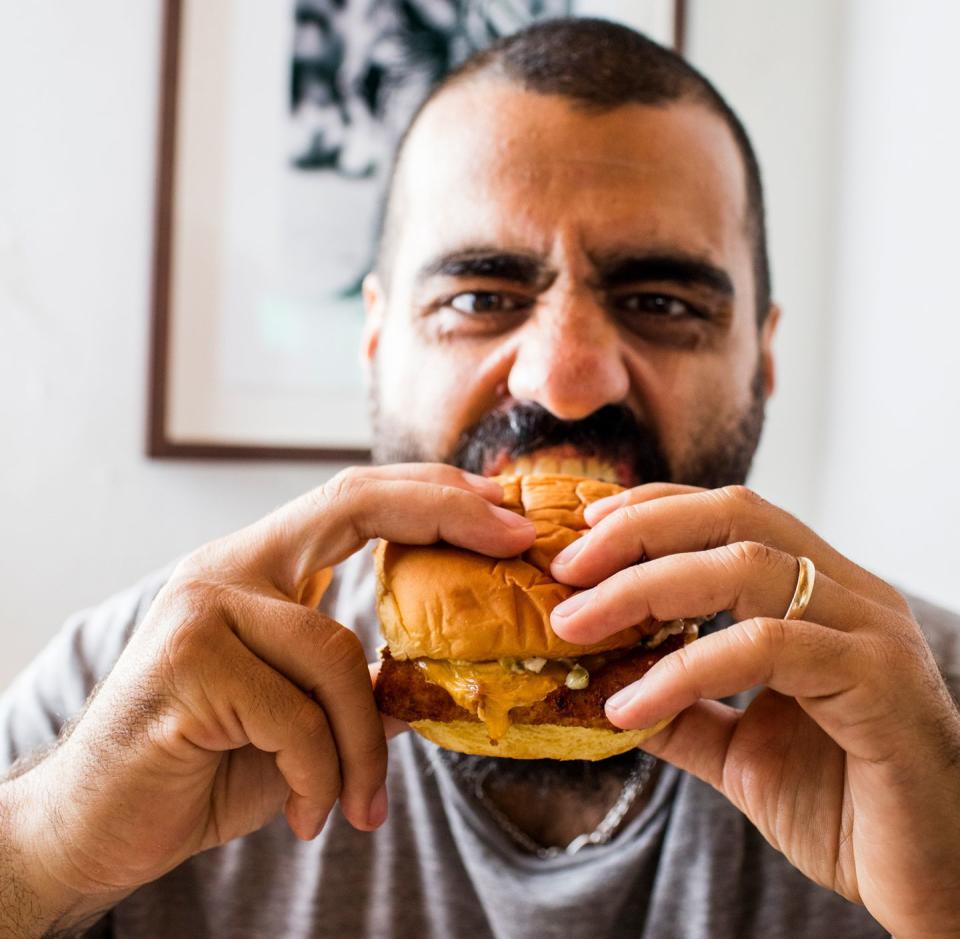Why the Filet o' Fish Sandwich from the Jones Is Our Fast Food Redux of the Year

Why do you keep returning to a certain restaurant? Faced with a multitude of choices, particularly in a metropolis like New York or San Francisco, what lures you back again and again to that corner of the city you already know?
The answer, for most of us, depends on a range of peculiar factors—deeply personal factors that might only incidentally have to do with food. Maybe it’s easy to find parking. Maybe the signature dish reminds you of something your grandmother used to cook. Maybe you like the way the bartender makes your martini. Maybe you like the way you don’t have to tell the bartender how you want your martini; she already knows, and she’s reaching for a chilled glass the moment you walk through the front door.
I can’t put a finger on why I long to go back to the Jones, which sits close to the corner of Great Jones Street and Bowery in downtown Manhattan. I suspect it has something to do with my childhood and punk rock and the framed copy of the Clash’s London Calling on display in the bathroom. I know it has something to do with the way pale afternoon light eased through the windows of the Jones back in early March, when I dropped by for what would end up being one of my last lunches in New York City before the pandemic froze us all in Boo Radley mode.
I liked the slowness of the room that afternoon—how it moved with the opposite of a bustle. New York is awash in frantic restaurants. It can be a relief to find one that feels as unrushed as a country chapel. And the Jones does have a touch of holiness to it, if you’re a sucker for New York history. For decades it was called (officially, at least) the Great Jones Cafe. Jean-Michel Basquiat lived and created art across the street, at 57 Great Jones; supposedly he and Madonna used to hang out at the bar in the Eighties.
Really, though, I go back to the Jones because of the filet o’ fish sandwich.
Fear not: The filet o’ fish sandwich at the Jones—which we celebrate in Esquire’s new Best New Restaurants package as the Fast Food Redux of the Year—does not represent some cheffy, upside-down deconstruction of a menu item that many of us remember from an international chain that has served food to hundreds of billions of human beings. No. It is the same sandwich, just with a few critical upgrades courtesy of chef Jack Harris. (Harris is now cooking over at Fairfax in the West Village, but he developed this twist on an American staple at the Jones in late 2019.)
The pollock is fresh, the tartar sauce is whipped up on site, the bun is a Martin’s potato roll—one of those rare supermarket items that most chefs (at least the honest ones) admit they cannot improve upon. Otherwise, the echoes of the original are obvious: The kitchen team cuts the fish into a square, deep-fries it, quilts it with a slice of American cheese.

Gabriel Stulman, the 40-year-old New York restaurateur who bought the Great Jones Cafe after it closed in 2018 and reopened it as the Jones, grew up in a family that kept kosher, and so his memories of the filet o’ fish sandwich are linked to the fact that it was the only sandwich on the McDonald’s menu that he was allowed to order when he was a kid, per the laws of kashrut. As he and Harris readied the Jones for reopening, Stulman got to thinking of Danny Meyer’s Shake Shack and David Chang’s Fuku and how they’d given fast-food fixtures a makeover. It dawned on him: “Nobody’s running with the filet o’ fish.”
Now, I have ordered the filet o’ fish sandwich every time I have gone to the Jones. The routine goes like this. I take the train from the Hudson Valley into Manhattan, walk from Grand Central Terminal to the Bowery, and promise myself during the southward stroll that this time I shall endeavor to steer toward other menu items. A dozen cold Violet Cove oysters. The salmon rillette with a familiar roll of Ritz crackers. The spatchcock chicken with fingerling potatoes and salsa verde. (Paradoxically, the Jones has found itself well-positioned during the pandemic because it delivers that sort of comfort to people who are weary of their tedious, tiny home kitchens. “I want something familiar,” Stulman told me. “I want something that warms me. I am not seeking that really creative, imaginative dish. I want duck confit. I want steak frites. And I don’t want you to reinvent it with other ingredients. Don’t fuck with it.”)
Regardless of what I tell myself, each time I take my seat at the Jones, hungry from the walk from Grand Central, I can’t imagine sidestepping the filet o’ fish.
The filet o’ fish taps into childhood memories that run so deep—as brain-deep as that TripleDent Gum jingle in Inside Out—that the concept of free will feels like a fiction. My mother, inclined toward a forgivable dash of revisionist nutritional history since my family moved to Southern California back in 1978, likes to insist that my brother and sister and I only rarely ate fast food when we were little kids. Which doesn’t explain why I so perfectly recall the McDonald’s in Fairfield, Connecticut, that I was able to drive directly to it a couple of years ago without even looking at a map.
Anyway, I could use that sandwich right about now. We’re heading into the vortex of gloom. You can feel it. The virus is casting a wider net; infection rates keep rising; the numbers are becoming incomprehensible. Soon, restaurants in New York City and everywhere else will have no choice but to shut down again, and many of them won’t come back at all. Stulman himself, who was riding high in February, has been forced to close his Fedora and Bar Sardine, and he has found himself, at 40, reevaluating what he wants out of life and work. He has taken up meditation.
“I’ve been spending a lot more time being introspective,” he told me at an outside table at the Jones, as we savored what would probably be the last warm evening until spring.
Joseph Leonard, the first restaurant in Stulman’s downtown-spanning network, opened 11 years ago, and at that point, he said, “I just started sprinting. We built restaurant after restaurant after restaurant. What Covid did was, it unplugged the treadmill. It allowed me to ask the question, ‘Is what I’m chasing what I want to chase?’ More is not more. I would rather make less money and be less stressed. I would rather make less money and have more balance in my life. I have changed a lot. I have reevaluated my priorities. I actually now don’t want as many restaurants as I had.”
Maybe, Stulman mused, there will be far fewer restaurants in New York City when the pandemic finally peters out. But maybe, he went on, that loss will disconnect us from our chronic slavering hunt for what’s “new new new new new.” Maybe that pace will slow down. Maybe some of us will go back to being regulars, eating at places like the Jones three or four times a week.
While Stulman and I talked, I ordered a filet o’ fish sandwich, naturally. I told him that I’d share it—we could split it down the middle. He nixed that idea. He ordered a second filet o’ fish sandwich for himself. Apparently we were on the same wavelength. “I don’t want to wonder if I’m going to like it,” he said. “I want to know I’m going to like it.”
You Might Also Like

